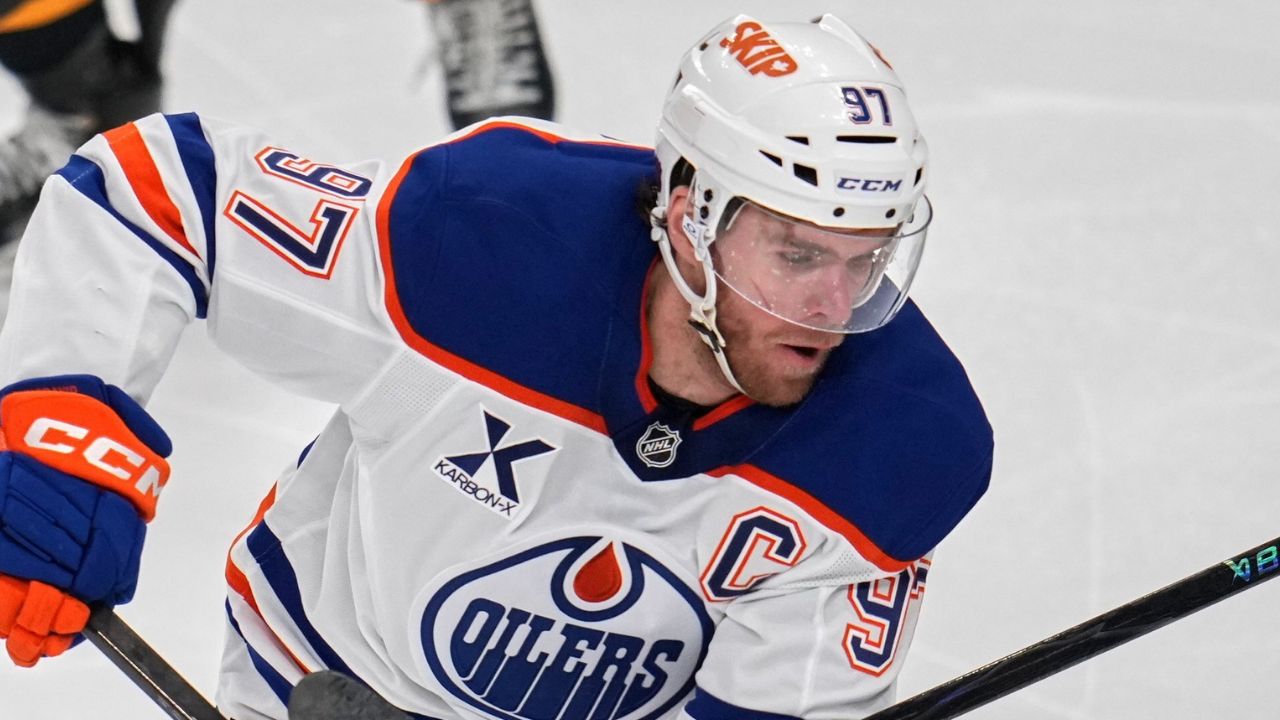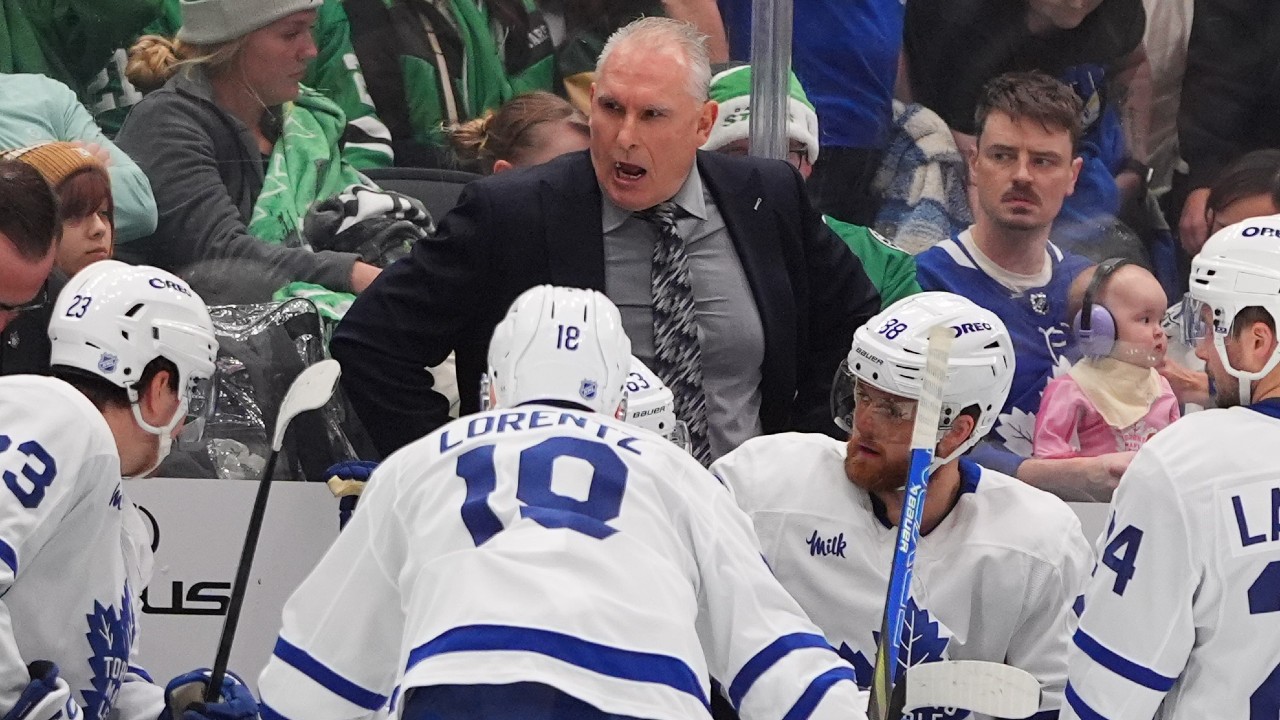
VANCOUVER — The happiest three days of the Canucks’ season were the last three of their first half, when they swept two home games against the Toronto Maple Leafs, launching themselves into a second half of the schedule that will need to be historically good for Vancouver to return to the National Hockey League playoffs.
The Canucks were so bad in the first half of the 56-game season, and especially the opening four weeks, that they probably need to win 19 of their final 28 games — or play .680 hockey — just to give themselves a chance at making the Stanley Cup tournament.
This is extremely unlikely but not outright impossible the way the Canucks have played the last 12 games and goalie Thatcher Demko has played most of the season. Both are finally starting to get results.
Even with Brock Boeser taking another step offensively and Quinn Hughes looking again like a future Norris Trophy candidate, Demko is easily the Canucks’ first-half MVP.
After three dreadful starts to begin the season, when the Canucks’ systems play was chaotic and reckless, Demko has posted the fourth-best save percentage in the league (.926, minimum eight games) since Jan. 23. Clear Sight Analytics’ proprietary goaltending data, which analyzes an exhaustive number of factors for shot quality, shows Demko third in the NHL with 11.59 goals saved above expectation as of Saturday’s 4-2 win against the Leafs.
Yes, the 25-year-old, first-year starter has been that good. He has lately and handily been outplaying his mentor and former Vancouver No. 1, Jacob Markstrom, whose start with the Calgary Flames had Canucks fans stoking their angst and the flames on their torches.
But Demko will have to remain sensational, and get a heckuva lot more help from teammates than he did during the first half for the Canucks to salvage their season.
Team record: 11-15-2 (6th in the North Division)
Goals for: 2.86 per game (18th in the NHL)
Goals against: 3.32 per game (28th in the NHL)
Power play: 20.2 per cent (tied 18th in the NHL)
Penalty kill: 81 per cent (14th in the NHL)
Best surprise: No one expected Demko to reach Markstrom-level excellence in his first season, but this was always the Canucks’ succession plan. The Californian was the second goalie drafted in 2014 and has been groomed for the top job in Vancouver since then. So, he’s not the Canucks’ biggest surprise. That still has to be rookie winger Nils Hoglander.
A five-foot-nine, second-round pick from 2019, Hoglander not only made the NHL roster a month after turning 20 but has been a staple of coach Travis Green’s top six. And although the Swede has already endured a couple of scoring slumps, hitting the halfway mark with five goals and 11 points in 28 games, Hoglander’s speedy tenacity and aggressiveness with the puck has been sharply consistent – as has been his ability to drive possession.
Averaging 15:07 of ice time playing largely alongside Bo Horvat on the second line, Hoglander leads all regular skaters with a 52.7 shots-for percentage and a corresponding expected-goals-for percentage of 52.5. Hoglander may not become a star like new friend and countryman Elias Pettersson, but it looks like he could be an awfully good NHL player.
Biggest disappointment: This category is like naming the coldest day in Greenland. Pettersson would have been an early candidate, but the 22-year-old (currently out day-to-day with an upper body injury) has been better than credited the last six weeks. Linemate J.T. Miller has been erratic, getting more criticism for his body language than still-impressive scoring totals, but has been dominant in a lot of recent games. Youngish forwards Jake Virtanen and Adam Gaudette have disappeared offensively. But the Canucks’ biggest disappointment so far has to be goalie Braden Holtby.
Signed as a free agent, ostensibly as Markstrom’s replacement but really to complement Demko in a netminding tandem, Holtby has been so badly outplayed by his junior partner that the 31-year-old former Vezina Trophy winner is now a distant No. 2. His first-half save percentage of .893 ranks 42nd among 50 NHL goalies who have played at least eight games. After allowing a couple of suspect goals last week in a 5-2 loss to the Winnipeg Jets, Holtby admitted he may be thinking too much – possibly an indication that the relationship between him and goaltending coach Ian Clark is not the match made in heaven the Canucks were hoping for.
For now, Holtby’s two-year, $8.6-million contract looks like yet another lead weight on the team’s salary cap.
Biggest question for the second half: What will Jim Benning do?
The Canucks general manager was widely excoriated on social media for his state-of-the-union virtual press conference on Friday, asking fans for more patience and saying he is managing “day by day” ahead of the April 12 trade deadline. Unvarnished, Benning rarely does himself much good in these public-speaking exercises. But is the GM really going to say five weeks before the deadline: “I’m planning to blow up the team and trade a bunch of guys, but I’d sure like them to keep playing hard and winning games until I do”?
The Canucks have several impending unrestricted free agents who, in any normal year, would have value as rentals to playoff-bound teams: Alex Edler, Tanner Pearson, Brandon Sutter, Jordie Benn and Travis Hamonic. Undermined by a series of bad contracts he signed for veteran role players, Benning also needs do everything he can to clear cap space for what should be monster second contracts for Pettersson and Hughes, which is why he has been trying hard to find a taker for Virtanen.
If the Canucks are out of the playoff race at the deadline – as they are out of it at this point – will they finally be sellers and leverage outgoing players for assets that might help them in the future?




